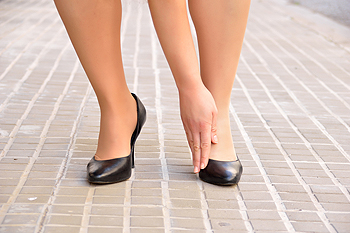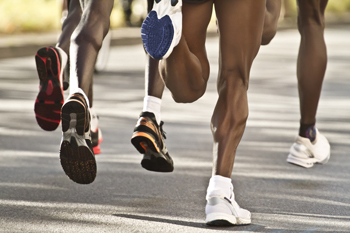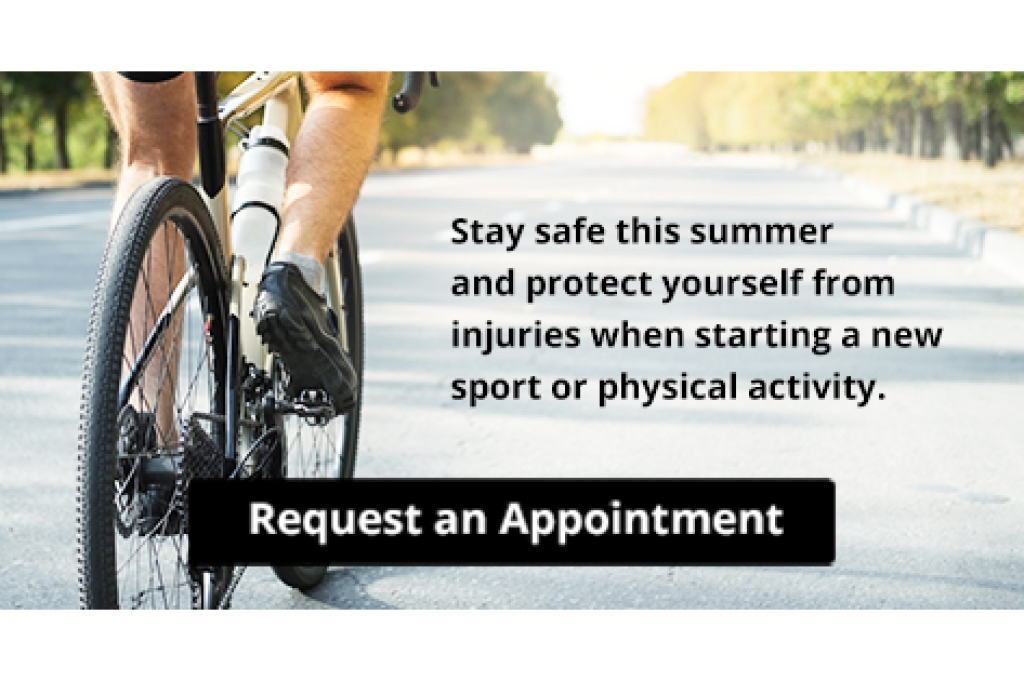Connect With Us
Blog
Blog
Why Are High Heels Bad For My Feet?
 High heels are a popular choice for many people as they can make you look taller and make your legs appear longer, your feet smaller, and your body thinner. However, none of these perceived benefits are worth the damage to your feet and ankles that high heels can cause. Over time, wearing high heels can alter the muscle balance around the ankle joint, making the ankles weak and unstable, affecting your balance, and raising your risk of ankle sprains. The Achilles tendon may shorten and stiffen. In people who wear high heels often, the tendons can become so short and stiff that switching to flats causes calf pain. Even if you aren’t quite ready to give up your high heels, there are measures that you can take to prevent further damage and reduce your risk of injury. Look for high heels that are no taller than two inches and have thicker heels, alternate between high heels and flats often, wearing your high heels for no more than two or three days per week, and stretch your feet and ankles regularly. To learn more about the connection between footwear and foot health, please consult with a podiatrist.
High heels are a popular choice for many people as they can make you look taller and make your legs appear longer, your feet smaller, and your body thinner. However, none of these perceived benefits are worth the damage to your feet and ankles that high heels can cause. Over time, wearing high heels can alter the muscle balance around the ankle joint, making the ankles weak and unstable, affecting your balance, and raising your risk of ankle sprains. The Achilles tendon may shorten and stiffen. In people who wear high heels often, the tendons can become so short and stiff that switching to flats causes calf pain. Even if you aren’t quite ready to give up your high heels, there are measures that you can take to prevent further damage and reduce your risk of injury. Look for high heels that are no taller than two inches and have thicker heels, alternate between high heels and flats often, wearing your high heels for no more than two or three days per week, and stretch your feet and ankles regularly. To learn more about the connection between footwear and foot health, please consult with a podiatrist.
High heels have a history of causing foot and ankle problems. If you have any concerns about your feet or ankles, contact one of our clinicians from The Footcare Centre. Our podiatrists can provide the care you need to keep you pain-free and on your feet.
Effects of High Heels on the Feet
High heels are popular shoes among women because of their many styles and societal appeal. Despite this, high heels can still cause many health problems if worn too frequently.
Which Parts of My Body Will Be Affected by High Heels?
- Ankle Joints
- Achilles Tendon – May shorten and stiffen with prolonged wear
- Balls of the Feet
- Knees – Heels cause the knees to bend constantly, creating stress on them
- Back – They decrease the spine’s ability to absorb shock, which may lead to back pain. The vertebrae of the lower back may compress.
What Kinds of Foot Problems Can Develop from Wearing High Heels?
- Corns
- Calluses
- Hammertoe
- Bunions
- Morton’s Neuroma
- Plantar Fasciitis
How Can I Still Wear High Heels and Maintain Foot Health?
If you want to wear high heeled shoes, make sure that you are not wearing them every day, as this will help prevent long term physical problems. Try wearing thicker heels as opposed to stilettos to distribute weight more evenly across the feet. Always make sure you are wearing the proper shoes for the right occasion, such as sneakers for exercising. If you walk to work, try carrying your heels with you and changing into them once you arrive at work. Adding inserts to your heels can help cushion your feet and absorb shock. Full foot inserts or metatarsal pads are available.
If you have any questions please feel free to contact our office located in Weybridge, UK . We offer the newest diagnostic and treatment technologies for all your foot and ankle needs.
Read more about Effect of High Heels on the FeetEffect of High Heels on the Feet
For hundreds of years, women have been wearing various kinds of high heels for aesthetic reasons. Women who wear high heels appear to be taller and have longer and thinner legs, and the wearer’s gait and posture changes. Though high heels have had an association with femininity and have kept them popular over the years, there are definite health problems caused by wearing them too frequently.
The motion of the ankle joints is limited when heels are worn. The ankle joint is very important to the body when it comes to walking. Because of their location, these joints have a great deal of weight put on them. Thus, it is very important to keep them as healthy as possible. The Achilles tendon is the main tendon in the ankle. Wearing high heels too often, studies have shown, can cause the calf muscle and Achilles tendon to shorten and stiffen. This can cause problems when shoes without heels are worn.
By putting a great deal of pressure on the ball of the foot and by forcing the toes into a small toe box, high heels can cause or may worsen many foot problems. These include corns, hammertoe, bunions, Morton’s neuroma and plantar fasciitis.
Not only does wearing high heels regularly have negative effects on the feet, the rest of the body can suffer as well. The knees, one of the most important joints in the entire body, can be affected by wearing high heels. High heels can cause the knees to stay bent all the time. Also, it can cause them to bend slightly inward as well. Doctors believe that women can suffer from osteoarthritis later in life because of constantly walking like in high heels. By limiting the natural motion of the foot during walking, high heels also cause an increased in stress on the knees.
Similarly, high heels can cause the back to go out of alignment. If high heels are worn constantly, the spine’s ability to absorb shock can cause continued back pain. They can compress the vertebrae of the lower back, and can overuse the back muscles.
However, this is not to say that high heels can never be worn. If worn occasionally and not often, they will not cause serious problems. They should not be worn every day. It’s important to wear them modestly to avoid the long-term physical health problems of the feet, knees, ankles, and back mentioned above.
Captains log, stardate 1 June 2021
As owner-director of The Footcare Centre it gives me immense pride and satisfaction seeing the wonderful, daily care our team delivers. For some patients this can be life changing as our team improves mobility, reduces pain, and enables return to activity.
For me, it was my skill as “healthcare manager” that was both recognized and wanted by Canada that enabled fast track application as a federal skilled worker all those years ago. This has enabled the growth of The Footcare Centre team both sides of the pond. Developing teams which spans two continents, with thriving practices in Weybridge, Surrey and in Niagara Falls, Canada.
I have been a podiatrist for 24+ years now and a healthcare manager for 17+ years. Over that time, I have loved the rewards developing people brings. Jayne Robertson (Practice Manager at Weybridge), David Good (clinical manager at Weybridge) and myself are collaborative leaders - we enjoys utilising the skills of the team in both undertaking tasks but also in making decisions. The whole team is relied on day in, day out, but as managers - always ensure they know we available and approachable.
This approach is key to everyone’s success: patients, team members, The Footcare Centre itself.
I love overseeing this process and developing a service that is unique.
Each team member thrives here through development. Our culture is built around improvement, and goals and objectives help (I have them and each team member has them), as a tool to further the whole team’s development. We grow together.
Jayne and David are key to this process. Indeed, If you ever attend our practices as a patient, you will experience a professional yet friendly approach - you will experience quality care, but hopefully enjoy the experience too! This culture is deliberate and is delivered by an exceptional team of skilled clinicians, who have their team ethic and a clear vision and mission.
Who are we as a team?
“By offering the Care, Professionalism and Time that feet deserve, our goal is to be the # 1 choice that comes to mind when people think about footcare.
WHAT WE DO: We treat patients who are suffering from various foot-oriented problems & help by providing structured plans to improve foot health, reduce pain & promote healthy active living, while maintaining a better level of care.
HOW WE DO IT: We combine a professional approach with evidence based, tailored care solutions. We take the time to clearly communicate with patients the various options available and suggest appropriate courses of action.
WHY WE DO IT: We believe all feet deserve to be healthy and we truly enjoy making an impact on people's lives.”
We love coaching, one-to-one development, inducting new team members, and mentoring those who need it. There is nothing more rewarding than mentoring a colleague to become a better version of themselves.
Personally, I truly thrive on managing “the business” too: the numbers, the statistics, testing, and measuring. I test and measure pretty much everything in our business. By measuring, we can improve as a team, as a service, and improve our outcomes on the care we deliver. This is where management-meets healthcare-meets science and I use my skills as a chartered scientist in my business management and care.
Do you think you are a good fit for The Footcare Team Centre team?
Stuart Berry
Things You Should Do to Prevent Running Injuries
 Whether you run for fun or are training for a marathon, you should always take measures to avoid common running injuries such as plantar fasciitis and Achilles tendinitis. Make sure that after you run, you take time to allow your body to rest and recover. Taking a day off from running to rest may help you avoid overuse injuries. Using foam rollers, massaging your muscles, and gently stretching your legs and feet after a run is suggested. Sleeping well and eating a healthy diet, wearing the right shoes, and increasing your training gradually over time are also beneficial. To learn more about how to prevent running injuries, please consult with a podiatrist.
Whether you run for fun or are training for a marathon, you should always take measures to avoid common running injuries such as plantar fasciitis and Achilles tendinitis. Make sure that after you run, you take time to allow your body to rest and recover. Taking a day off from running to rest may help you avoid overuse injuries. Using foam rollers, massaging your muscles, and gently stretching your legs and feet after a run is suggested. Sleeping well and eating a healthy diet, wearing the right shoes, and increasing your training gradually over time are also beneficial. To learn more about how to prevent running injuries, please consult with a podiatrist.
Exercising your feet regularly with the proper foot wear is a great way to prevent injuries. If you have any concerns about your feet, contact one of our clinicians of The Footcare Centre. Our podiatrists will treat your foot and ankle needs.
How to Prevent Running Injuries
Many common running injuries are caused by overuse and overtraining. When the back of the kneecap starts wearing out and starts causing pain in your knee, this is commonly referred to as runner’s knee. Runner’s knee is a decrease in strength in your quadriceps and can occur if you’re not wearing properly fitted or supporting shoes. To prevent runner’s knee, focusing on hip strengthening is a good idea, as well as strengthening your quads to keep the kneecaps aligned.
What Are Some Causes of Running Injuries?
- One cause of a common running injury is called iliotibial band syndrome.
- Plantar fasciitis is also another common injury.
- Stress fractures can occur from overtraining, lack of calcium, or even your running style.
Best Ways to Prevent Running Injuries
- Wear footwear that fits properly and suits your running needs.
- Running shoes are the only protective gear that runners have to safeguard them from injury.
- Make a training schedule. Adding strengthening exercises as well as regular stretching can help keep you strong and limber and can lessen the possibility of injuries.
- Stretching keeps muscles limber; this will help you gain better flexibility.
If you have any questions please feel free to contact our office located in Weybridge, UK . We offer the newest diagnostic and treatment technologies for all your foot and ankle needs.
Read more about How to Prevent Running InjuriesBlog Archives
- 2025
- 2024
- 2023
- 2022
- 2021
- 2020

